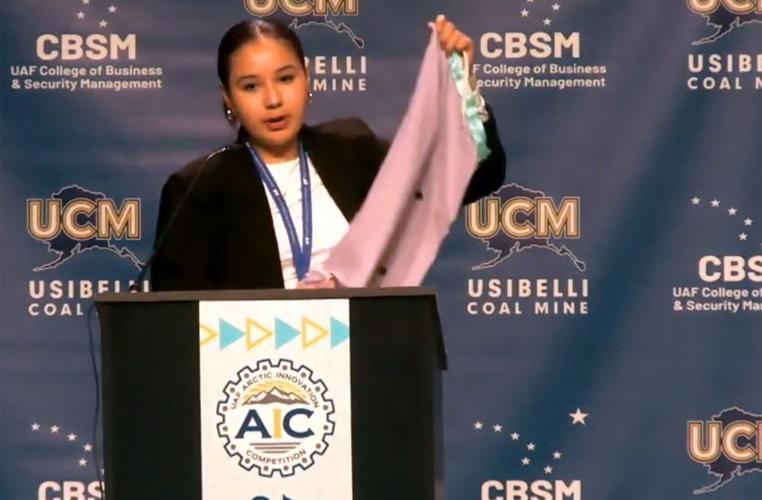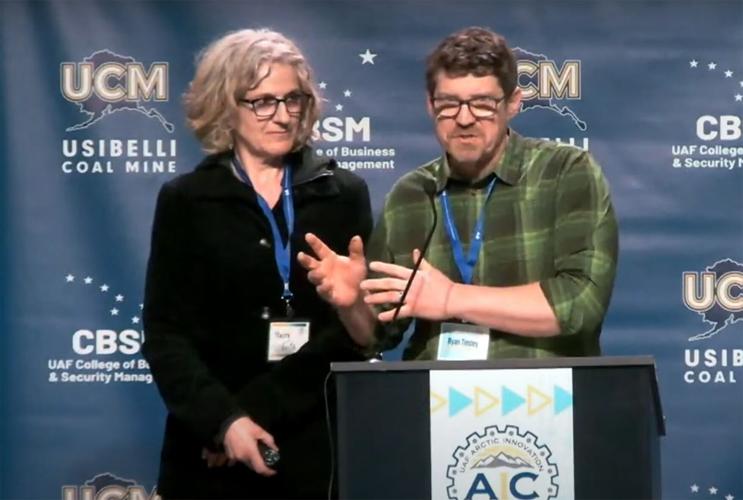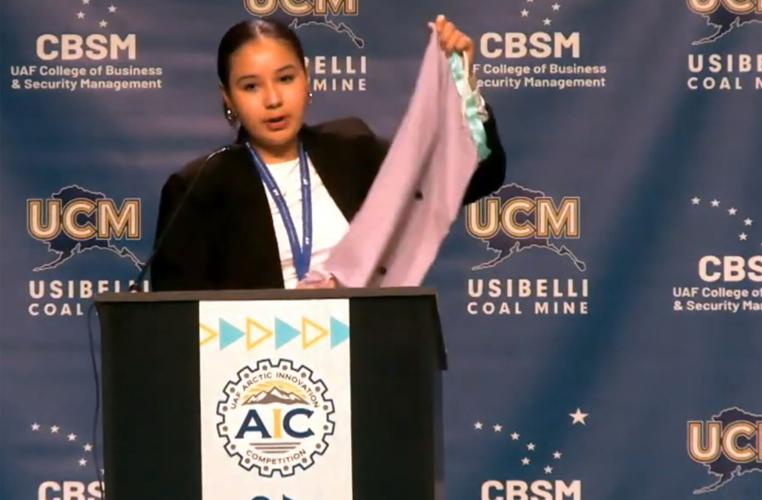A robust Arctic building foundation kit took home the top prize at the University of Alaska Fairbanks 2025 Arctic Innovation Competition (AIC) on Saturday.
Sixteen projects across three divisions were considered for awards, with more than $45,000 in cash prizes and scholarships distributed.
Sponsored by Usibelli Coal Mine and other organizations, the AIC was launched by the UAF College of Business and Security Management to encourage Alaskans to think creatively and develop ideas that improve life in the state.
The competition is divided into three divisions: main (ages 18 and up), junior (ages 13–18), and cub (ages 12 and under).
Main division: Tackling permafrost with smart design
Ryan Tinsley, Stacey Fritz, Jessica McKay and Dan Fritz won the top prize in the main division for their concept: adaptable foundation systems for Arctic climates.
Fritz and Tinsley, of Fairbanks-based Alaska Adaptable Housing, presented their team’s design to judges. The foundation system is meant to address thawing permafrost, erosion, and subsidence.
“Foundations are our most critical component, but maintaining them with uneven settling can be difficult or impossible,” Fritz said. “Alaska has a severe housing crisis, and many of them have to be moved.”
She noted that Fairbanks homeowners have spent over $226 million on permafrost-related foundation issues. Current foundation options — including pilings, posts and pads, multipoint systems and skids — are rigid and must keep homes level or stable as the ground shifts.
Of the four, skids are the most versatile, but they are expensive, difficult to ship, and require custom construction.
Tinsley said their team’s solution is a structurally rigid flat pad kit that can be delivered on pallets or in shipping containers. The kit can be assembled on-site without heavy machinery or specialized skills, and the components can be changed independently.
“With UAF, we are exploring alternate locally available and lighter materials,” Tinsley said, adding that a full-scale prototype is the next logical step. The patent is currently pending.
Fritz said the final product will be cost-competitive and customizable for home features such as porches, stairs, and scaffolding, or to assist with retrofits.
In addition to winning the $15,000 top prize, the team received two AIC kicker awards totaling $4,000.
Junior division: Sensory overload solution
Lathrop High School sophomore Sydney Plumlee won first place in the junior division for designing a sensory-blocking hat. She told judges she experiences frequent sensory overload, which inspired her to create a product that blocks at least 90% of noise and sight.
“The constraints were that it had to be safe and something that I could feasibly make, so no force fields,” she said.
She initially considered a noise-canceling blanket, a cube, or a hat. Based on feedback, she chose to pursue the hat.
The prototype features a foldable flap that covers the head, blocking out sound while remaining lightweight and breathable. Plumlee earned a $1,000 prize for her first-place finish.
Cub division: Hair help for cold mornings
Nome student Denali Walwrath won first place in the cub division for the second time with her invention, the Frazzled Frozen Free. Walwrath previously won first place in 2023 and took second in 2021 with her brother Dylan.
She created the project to stop her hair from freezing during early-morning swim practices before school.
“When I walk across campus, my hair gets all frozen, and once it gets to school, it’s frazzled,” she said. “I don’t have enough time to use a blow dryer.”
She designed the product for people who live in cold climates, have limited time, and still want good hair. After testing bonnets, shower caps, and hair coverings — with limited success — she and her grandmother sewed a customizable, Velcro-fastened hair cover that adjusts to different hair lengths. The estimated cost to make it is $10.
Walwrath is testing her prototype with teammates and plans to expand to other swim teams. Her long-term goal is to market the product to a swimming brand.
“It lets people have great hair while living in a place where your hair can freeze,” she said.
She also noted that 28 million Americans swim for fitness, including 3.3 million on swim teams.
AIC emcee Lisa Cassino said Walwrath’s project stood out among multiple submissions.
“One of the many things about the Arctic Innovation Competition is its open and inclusive format, completely free to enter, and participants are welcome to submit as many ideas as possible ... the sky is the limit,” Cassino said. “Denali took that to heart and submitted multiple ideas.”
Walwrath received $500 for her first-place prize and an additional $50 for an honorable mention for her other entry, “Ball-B-Safe.”



